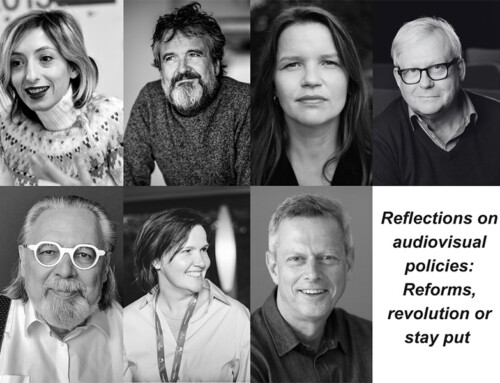Last year Film i Väst Analysis published Public Film Funding at A Crossroads. In april 2023 the follow up will be published, Public Film Funding at A Crossroads II (PFFC) II. At a seminar during Berlin Film Festival it will be discussed by a broad panel.
The updated publication aims to deepen the discussion around some of the most crucial issues for public film and audiovisual policies and for public film agencies in the mid- and long-term future. We have also included some of the most discussed and debated questions in the sector.
PFFC II should bring additional knowledge and insight that complements PFFC and paves the way for PFFC III that will focus on answers (linked to the overall thesis and questions (see PFFC)), recommendations and suggestions.
In PFFC II, we will, among other things, look more detailed into:
- how private and public stake stakeholders interpret external factors impact on the audiovisual industry/sector (inflation, the risk for stagflation/recession, the cost crisis for households around Europe, political instability, authoritarian and illiberal tendencies, Russia’s ambition to create a multipolar world/the war in Ukraine etc)
- how public film agencies are tackling and intend to further tackle internal, external and ecosystem changes by 2030;
- the development and understanding of the ‘purpose’/’aim’, content and scope of audiovisual politics now and in the future;
- the discussions and conclusions around IP, ‘independent producer’ and creative and artistic freedom and control;
- the relationships to the ‘new world’ – how should coexistence be understood and what could it look like in the mid-term future;
- definitions and attitudes towards The Grey Zone and a forecast of the zone’s future development;
- the consequences of the capacity shortage and concrete examples of capacity development now and in the mid-term future;
- developments in the medium-term streaming market and implications thereof for public film politics and agencies;
- the position and role of public service broadcasters in the future public funding of film and audiovisual works;
- the implementation in practice of Paragraph 13 of the AVMSD;
- the integration of incentives in a coherent film- and audiovisual policy;
- the consequences of the ‘incentive war’ in Europe – pro and cons;
- and the position of movie theatres and cinema films in the transforming audiovisual landscape.
PFFC II will be based on interviews with 100+ key persons in Europe’s film- and audiovisual sector and on dialogue with our territorial experts. We will include interviews with basically all pan European organisations and make public film agencies own take on the future to a prominent part in PFFCII. The latter will be based on survey questionnaire that will be passed out to all national film agencies independent of size and all regional film funds with more than one million euros to support production with. The survey will be supplemented with a number of interviews with film agencies across Europe.
We will organise focus groups meetings of experts (Eastern Europe, France, Germany, Italy, Spain, The Nordics and UK) and we will continue to do workshops and dialogue seminars around the same topics as mentioned above across Europe and add insight from those to the second report.
It is our strong belief that reflections, discussion and debates about the relevance and attractiveness for public film funding will grow in importance over the next couple of years.
In the Berlin event we will concentrate on if and how public film agencies and the sector can cohabit with streaming giants and handle ‘new world’ logics. We will also touch upon the ongoing discussion about who can be a beneficiary and what the end purpose is for all type of public funding of the audiovisual sector. There is a budding and in some countries fierce debate about the coherence in public funding of audiovisual works, might it be selective, automatic or some form of incentive based financing.
The entire report will be published late April 2023.





